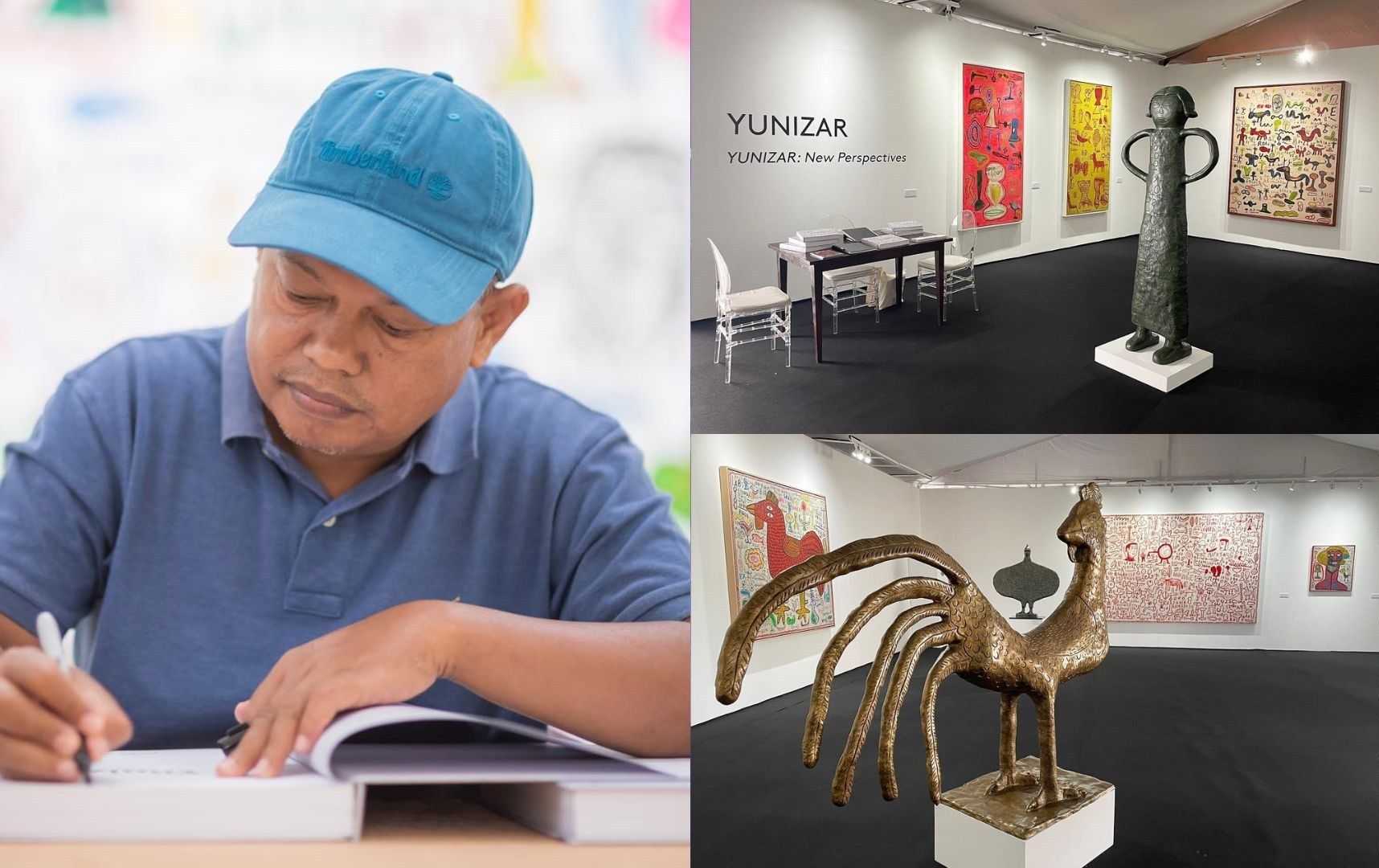Indonesian artist Yunizar on his artistry transcending time, borders, cultures

MANILA, Philippines — The recent Art Fair Philippines 2023 featured a number of local and international artists as it marked its 10th year, and among them was the decorated Indonesian artist Yunizar.
Not only did he have a special solo exhibition, but the art fair hosted a talk to discuss his artistry, which was also presented in the recently launched book "Yunizar: New Perspectives."
The talk covered how Yunizar's work stood apart amid the socio-political art that filled his country three decades ago, his involvement with the Kelompok Seni Rupa Jendela art collective, and his dabbling in sculpture.
To dive deeper into his artistry, Philstar.com reached out to Yunizar through Gajah Gallery to discuss the cultural similarities between Indonesian and Filipino artists. Gajah Gallery hosted the Art Fair Philippines 2023 talk.
Yunizar's responses were translated by the gallery's Jakarta manager Liza Markus, and he began by commending the talk for showing a kind of seriousness that promotes a deeper discussion of his work.
"I am very much open to interpretations beyond my own, and prefer my works not to be confined to one meaning, so the insights from the Filipino art scene are valuable to me," Yunizar added.
As much as the industry connected his art to Indonesia's political atmosphere years ago, the artist believes his works remain independent from it.
Related: Finding life in blank chaos: Alex Maceda on her unconventional artistic path
Still, he acknowledged, "Indeed, there are some people that read into my work through that lens, or view them as a counter or foil to the saturation of political art then."
His process features the same essence as his previous works, which capture object forms around him rather than a "grander national story." The artist, however, stressed that he is not at all opposed to other individuals interpreting or contextualizing his art through a political lens.
"It adds interesting layers to the reading of my work that can, at times, even surprise me," said Yunizar.
On Filipino artists and bridging styles
Yunizar admitted that he is not entirely familiar with Filipino artists or the creation of Filipino art through a socio-political lens. He is more familiar with their achievements.
Ronald Ventura, for example, caught his attention after the latter's record-breaking auctions in Hong Kong. Often, Yunizar would know of other artists based on how their works were accepted by the public rather than the artist's work or themes used, but he said this does not lessen his curiosity.
"It would be interesting to learn more about the similarities and differences between how Indonesian and Filipino artists portray social themes. We both have histories of colonialism and authoritarian rule," said Yunizar.
Related: Nayong Pilipino Foundation’s ‘traveling museum’ goes to Tarlac
The artist pondered if both countries have artists who have influenced each other. Looking back at his university days, he learned about French artist Paul Cezanne, a strong influence on his work.
"It would be great if students are now more exposed to our neighbors in the Philippines and other Southeast Asian countries — if not through travel, through books and the digital space," he added.
Yunizar noted how many Filipino and Indonesian artists are influenced by European art traditions, an effect of their colonial pasts. This may have left indelible marks on their respective local art scenes, but Filipino and Indonesian artists have also managed to reconcile Western styles with their motherland's methods and aesthetics.
"However, I think the Philippines preserves more Western art styles, whereas Indonesia swings more towards local aesthetics," he said before reflecting on his upbringing and influences.
Yunizar was born in Talawi in West Sumatra but moved to Yogyakarta in Java where he was more exposed to diverse contemporary art styles as Indonesia’s cultural capital. If he had stayed in Talawi, he said his view of art would be limited to naturalist painting still heavily influenced by European art.
The artist ended by imparting a key mindset that he attributes to his longevity in the international art scene, "Be authentic to yourself, and find your character and identity. That is what's important."
RELATED: Basquiat-Warhol: a rare artistic duo, reunited in Paris



















